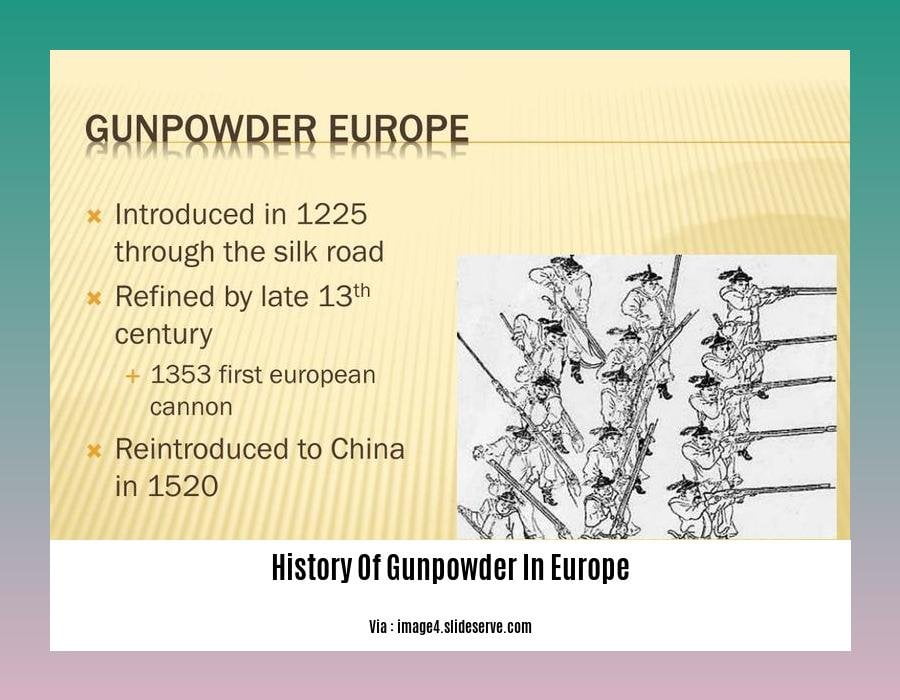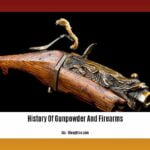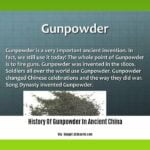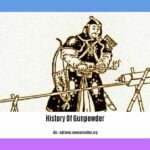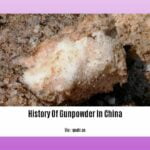The Dawn of Warfare: A Comprehensive History of Gunpowder in Europe
Key Takeaways:
- Gunpowder was introduced to Europe in the 13th century through Mongol conquests.
- The first recorded use of gunpowder in Europe was in a cannon.
- Guns evolved around 1304 when Arabs used black powder to shoot arrows.
- Black powder was adopted for firearms in Europe in the 14th century.
- Europe became aware of Chinese gunpowder innovations by the late 16th century.
- Mongol conquests played a role in spreading gunpowder knowledge.
History Of Gunpowder In Europe
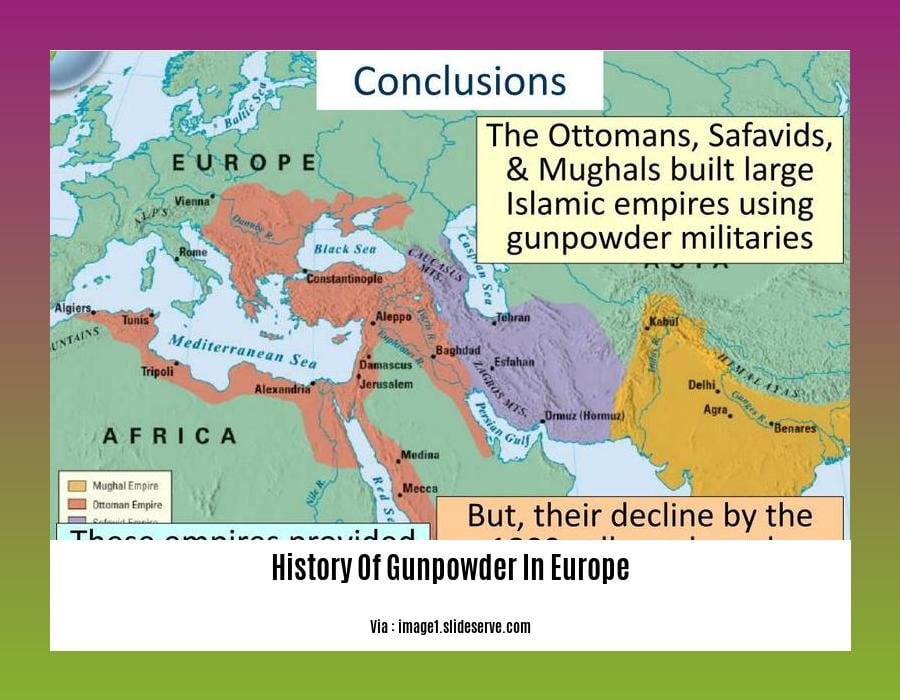
Gunpowder, a ground-breaking invention from China, made its way to Europe in the 13th century. It revolutionized medieval warfare and shaped the course of European history.
Early In Europe
The Mongols played a crucial role, as their conquests brought gunpowder knowledge to Europe. The first recorded use of gunpowder in Europe was in 13th-century Spain, where cannons were employed for siege warfare.
Emergence of Guns
The early 14th century saw the development of guns in the West. Arabs were the pioneers, using bamboo and iron tubes to fire arrows using black powder. Europeans quickly adopted this technology, and by the 14th century, black powder became the standard propellant for firearms.
The Spread
Mongol conquests enabled the dissemination of gunpowder knowledge across Europe. By the late 16th century, Europeans were familiar with Chinese advancements in gunpowder technology.
From its introduction to Europe, gunpowder transformed warfare. It increased the power and range of weapons, influencing battle strategies, fortifications, and the role of infantry and cavalry.
Gunpowder also had a profound impact on society. Military spending surged, leading to new industries and economic growth. The advent of firearms altered social structures, as armed citizens and mercenaries gained influence.
The History Of Gunpowder In Europe is a fascinating tale of innovation, warfare, and societal change that continues to shape our understanding of military history and technology.
Delve into the history of gunpowder, a groundbreaking invention that shaped warfare and changed the course of human history.
Discover the history of gunpowder timeline, a detailed account of the evolution of this explosive substance from its humble beginnings to its transformative impact on society.
Explore the history of gunpowder in China, the birthplace of this revolutionary technology and its profound influence on the development of Chinese civilization.
Uncover the history of gunpowder in ancient China, a fascinating chapter that sheds light on the origins and early applications of this powerful discovery.
Learn about the history of gunpowder and firearms, a comprehensive examination of the intertwined development of these two technologies and their profound impact on military tactics and global conflicts.
Immerse yourself in the history of Gunpowder Falls State Park, a Maryland sanctuary with a rich history that includes the production and testing of gunpowder, providing a glimpse into the industrial past of the region.
Enrich your knowledge with the history of gunpowder Wiki, a comprehensive resource that provides detailed information, timelines, and in-depth exploration of all aspects related to the history and impact of gunpowder.
Impact on Warfare: Siegecraft and Fortifications
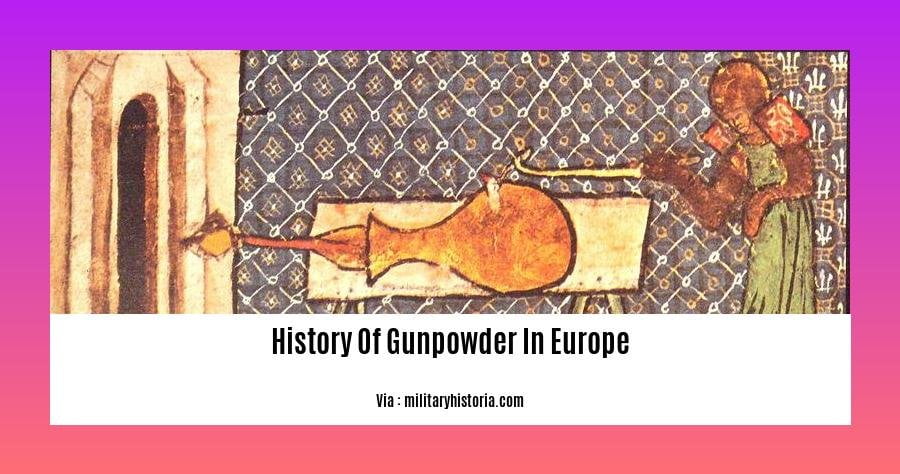
Gunpowder, the catalyst of medieval warfare, changed the face of war forever. It paved the way for new strategies, led to the evolution of weaponry, and ultimately played a pivotal role in the construction and defense of fortifications.
For centuries, castles and strongholds defined warfare. Their towering walls and intricate mazes offered formidable protection. But with the advent of gunpowder, warfare demanded new approaches. Siegecraft and Fortifications took center stage.
The Transformative Role of Gunpowder
Gunpowder’s explosive force had a profound impact on siegecraft. Cannon technology emerged, shattering the impregnability of stone walls. They pummeled fortifications, creating breaches that gave attackers an advantage.
In response, military architects revolutionized fortifications. Walls grew thicker, and bastions and earthworks became common. These new designs aimed to absorb the impact of artillery, protecting defenders within.
A New Era of Warfare
The introduction of gunpowder to Europe ushered in a new era of warfare. Castles, once seemingly invincible, became vulnerable. Artillery could now demolish towering walls, forcing armies to adapt their tactics.
Fortifications evolved into more complex structures, fortified with cannons and other advanced weaponry. They became centers of defense, enabling defenders to withstand prolonged sieges.
Key Takeaways:
- Gunpowder transformed siegecraft, making castles vulnerable to artillery.
- Fortifications evolved in response, becoming thicker and more resistant to bombardment.
- Cannon technology became a pivotal tool in warfare, capable of demolishing stone walls.
- The rise of gunpowder led to new strategies and altered the balance of power in medieval warfare.
Relevant URL Sources:
- Firearms in Medieval Warfare
- The Evolution of Medieval Siegecraft
Military Innovations and New Weapons: The Transformative Impact of Gunpowder in Europe
For centuries, medieval warfare relied on traditional weapons like swords and bows. But the advent of gunpowder in Europe sparked a revolution in military technology, forever altering the course of warfare and society.
The Birth of Gunpowder
The origins of gunpowder can be traced back to ancient China, where alchemists stumbled upon its explosive properties in the 9th century CE. Initially used as an incendiary device, gunpowder’s potential for military applications was soon recognized. By the 13th century, it had crossed the Silk Road and reached Europe, forever changing the face of warfare.
The Rise of Firearms
One of the most profound innovations made possible by gunpowder was the development of firearms. Early cannons, known as bombards, could hurl heavy projectiles at enemy fortifications. Muskets, on the other hand, provided foot soldiers with unprecedented firepower, allowing them to penetrate armor and inflict devastating wounds from afar.
Siege Warfare and Fortifications
Gunpowder also revolutionized siege warfare. Cannons could breach thick castle walls, making traditional fortifications obsolete. As a result, new architectural designs emerged, with stronger walls and towers designed to withstand the onslaught of artillery.
Key Takeaways:
- Gunpowder, a Chinese invention, transformed military technology in Europe.
- Firearms, including cannons and muskets, became indispensable in warfare.
- Gunpowder revolutionized siege warfare, leading to the development of new fortification designs.
- Gunpowder’s impact extended beyond the battlefield, influencing economic growth, military spending, and social structures.
Relevant URL Sources:
- The Gunpowder Revolution, c. 1300–1650
- The Invention of Gunpowder and Its Introduction Into Europe
Social and Cultural Transformation: The Impact of Gunpowder in Europe
Gunpowder, with its explosive force, sparked a social and cultural transformation that reshaped the face of Europe. Let’s dive into how this game-changer influenced medieval society.
Warfare Revolutionized
Gunpowder revolutionized warfare, marking a shift from the dominance of mounted warriors to infantry. Fortresses, once impenetrable, now crumbled under the force of siege weapons, altering battle strategies and the importance of fortifications.
Rise of Centralized States
As gunpowder weaponry became prevalent, states with centralized governments could amass armies and consolidate their power. Taxes flowed in to fund these standing armies, shaping the political landscape and enhancing the control of central authorities.
Economic Transformation
The demand for gunpowder and firearms led to a surge in mining, trade, and manufacturing. Towns specializing in these industries flourished, boosting economic growth and creating new opportunities for skilled workers.
Cultural Impact
The introduction of gunpowder weapons also had a profound cultural impact. Knighthood, once a symbol of martial prowess, declined in prominence as infantry gained importance on the battlefield. This shift challenged traditional social structures and the role of the warrior in medieval society.
Key Takeaways:
- Gunpowder revolutionized warfare, leading to a shift from mounted warriors to infantry dominance.
- Centralized states gained power through the use of gunpowder weapons, amassing armies and consolidating their authority.
- Economic growth soared with the demand for gunpowder and firearms, fueling new industries and trade routes.
- Cultural norms were challenged as gunpowder weapons diminished the role of knights and traditional warrior culture.
Relevant URL Sources:
- Gunpowder in the Renaissance
- 17.3 Gunpowder and Nomads in a Transitional Age
FAQ
Q1: When and how did gunpowder make its way into Europe?
A1: Gunpowder was introduced to Europe during the Mongol conquests of the 13th century and was first used in warfare for cannons.
Q2: How significantly did gunpowder impact warfare in Europe?
A2: Gunpowder revolutionized warfare, particularly siege warfare, and reduced the effectiveness of mounted warriors on the battlefield.
Q3: What role did gunpowder play in shaping European societies?
A3: Gunpowder facilitated the consolidation of power by centralized states, enabling them to raise taxes and maintain standing armies.
Q4: When did Europeans become aware of Chinese gunpowder inventions?
A4: Europeans gained knowledge of Chinese gunpowder technologies by the late 16th century.
Q5: What were the major stages in the development of gunpowder weapons in Europe?
A5: Arabs first used gunpowder to shoot arrows in the early 14th century, and black powder was adopted for firearms in Europe shortly after.
- China II Review: Delicious Food & Speedy Service - April 17, 2025
- Understand Virginia’s Flag: History & Debate - April 17, 2025
- Explore Long Island’s Map: Unique Regions & Insights - April 17, 2025
